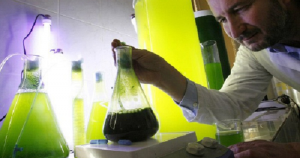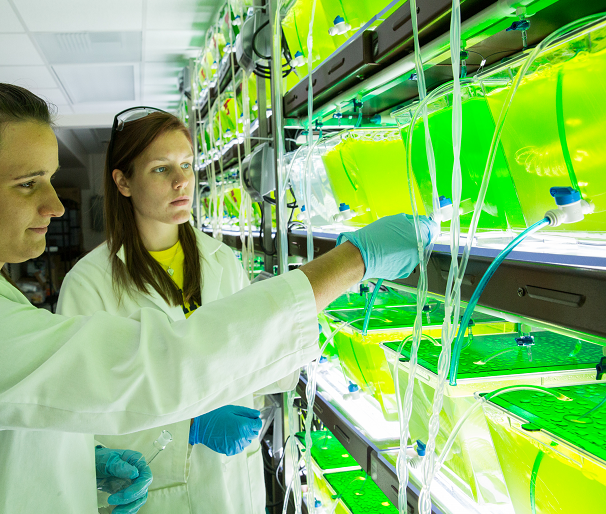
Scientists Have Developed A Power Cell That Harnesses Electricity From Algae
Researchers from Concordia University in Montreal have developed a power cell that generates electrical energy using the photosynthesis of blue-green algae, generating renewable energy while removing carbon from the atmosphere. This power cell could be used to power smartphones and computers in future.

The Paris climate talks are scheduled to start in next week. Scientists are in the process of harnessing electricity from blue-green algae in what will be a breakthrough in green technology to tackle climate change. A team led by Concordia University engineering professor Muthukumaran Packirisamy, in an effort to limit carbon emissions, created a power cell that harnesses electrical energy from the photosynthesis and respiration of cyanobacteria, which are the microorganisms that make up blue-green algae.
“Both photosynthesis and respiration, which take place in plant cells, involve electron transfer chains. By trapping the electrons released by blue-green algae during photosynthesis and respiration, we can harness the electrical energy they produce naturally,” said Muthukumaran.
Blue-green algae are long known to exist everywhere, making it significant for the invention that could potentially provide a large amount of energy. These plants were found to be the most prosperous microorganisms on earth, occupying a large range of habitats across the world, researchers said. In addition, unlike other renewable energy sources like solar power and wind power, their efficiency doesn’t vary with changes in the weather.
“Algae could naturally create electrons during photosynthesis, and metal probes stuck into the plant can capture that energy and transfer it into electricity for batteries. By taking advantage of this process that is constantly occurring all over the world, a new and cheaper way to generate carbon-free energy has been discovered,” said Packirisamy.
The photosynthetic power cell consists of an anode, cathode, and proton exchange membrane. The blue-green algae are placed in the anode chamber, and as they undergo photosynthesis, they release electrons onto the electrode surface. With an external load attached to the cell, it’s possible to extract the electrons and harness power from the device.
According to Packirisamy, the power cell currently can only be used on a small scale, and further improvements are needed for the technology. “We have a lot of work to do in terms of scaling the power cell to make the project commercial. It will take another decade before it could take the place of solar energy,” he said. The new technology has immense potential to be used in future and will also reduce greenhouse emission.